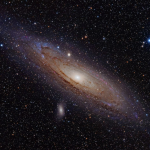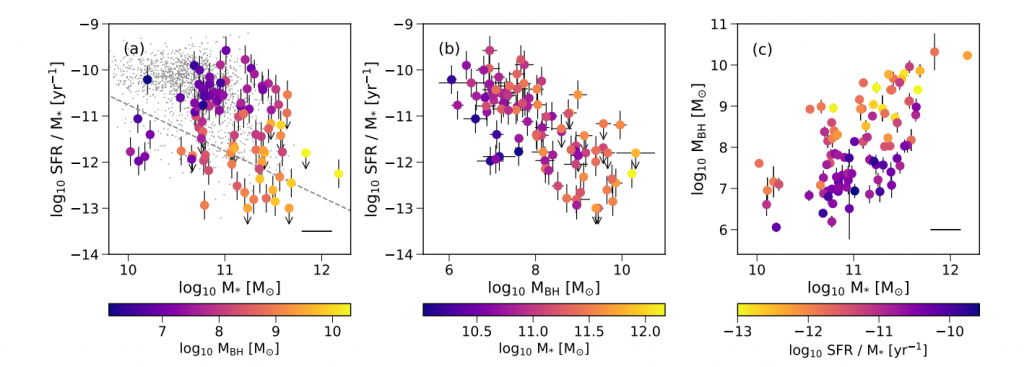Ever since Richard D’Souza and I learned that M31 suffered a large merger a few Gyr ago, we have been very curious about the impacts that this merger could have had on the satellite population. It is clear that the LMC has brought in a number of satellites, and so it’s reasonable to expect that other large mergers (e.g., the Milky Way’s merger with Gaia-Enceladus, or M31’s large merger) might have brought in satellites. If mergers do bring in satellites, are their properties distinctive? This may help us to understand:
- star formation histories of satellites
- their satellite orbits, angular momentum, planes
- their radial distributions
We wanted to build intuition for how these events proceed using high-resolution N-body models – the ELVIS suite of simulations.
In brief, we find that massive accretions (like the LMC merging with the Milky Way, or M31’s large merger) should deliver significant numbers of satellites to galaxies. The fraction varies depending on merger history, spanning 10%-70% of all satellites. These accretions temporarily enhance the number of satellites close to the main Milky Way-like galaxy, can lead to escaping galaxies(!), and often impart angular momentum to a satellite system.
The most important effect that mergers have on satellites is to clump their accretion time distributions. These satellites are typically accreted within a Gyr of the massive satellite, leading to a short-lived surge of satellite accretion. This signature can be observed! By using star formation shut-off time as a proxy for infall time in the Milky Way and M31, we measure a clear signature of satellite infall at the time of the three most important mergers in the Local Group – the mergers of Gaia-Enceladus and the LMC with the Milky Way, and M31’s large merger several Gyr ago.
This work is published in the Monthly Notices of the Royal Astronomical Society, and was presented at the Summer 2021 AAS meeting. Sky and Telescope picked up the story, and did an excellent write-up, linked here.





